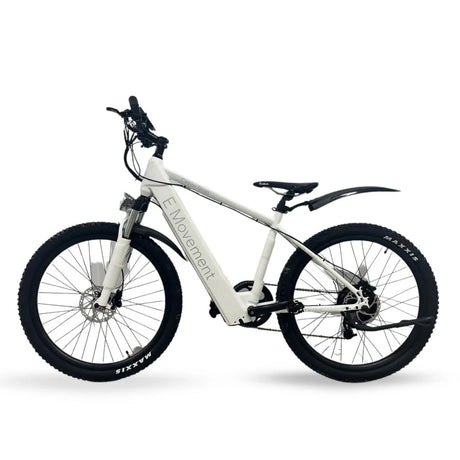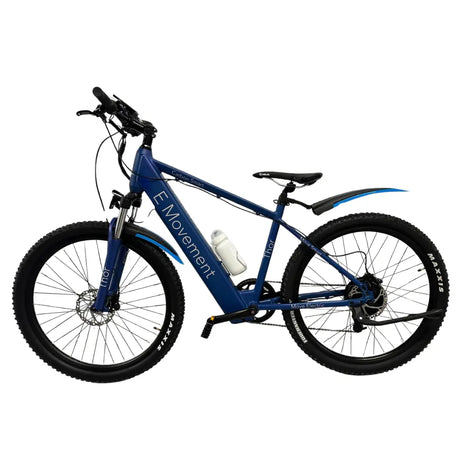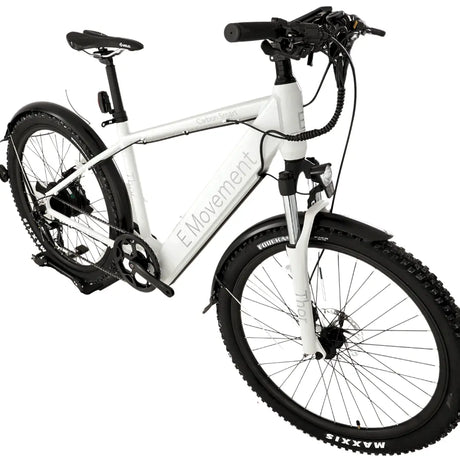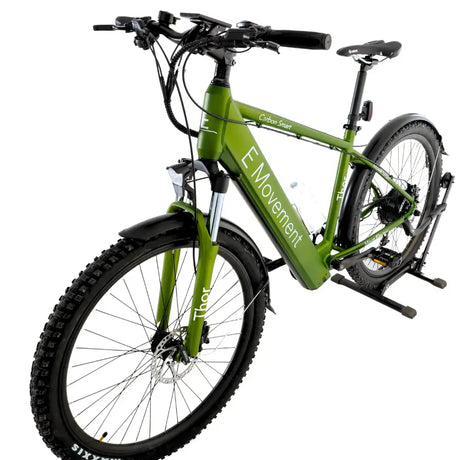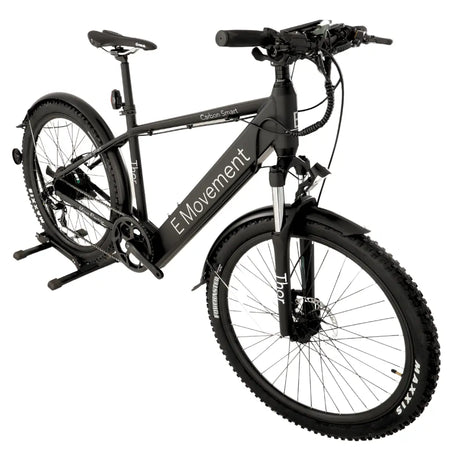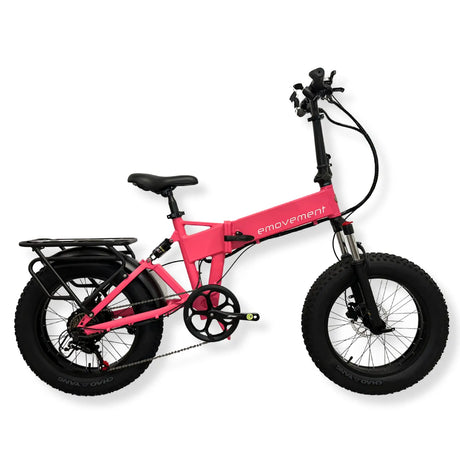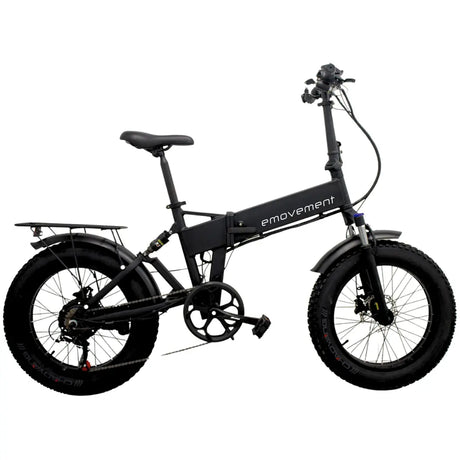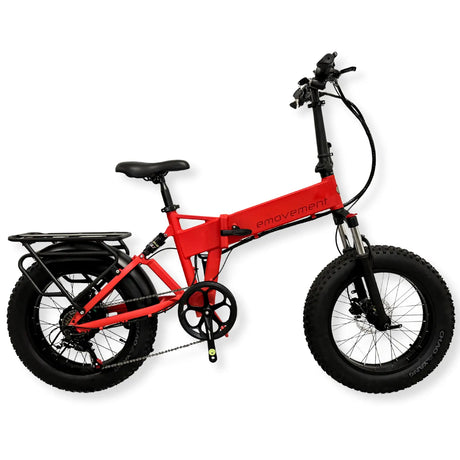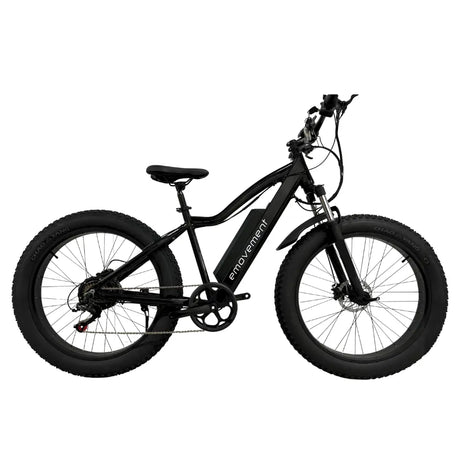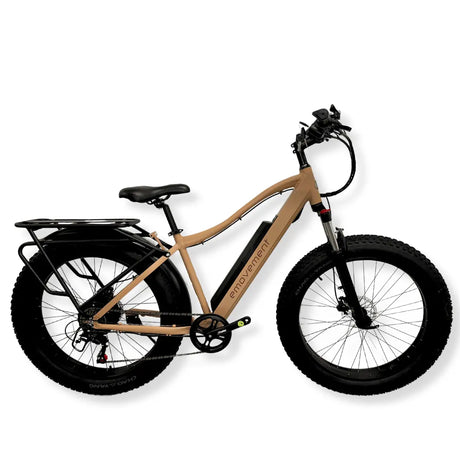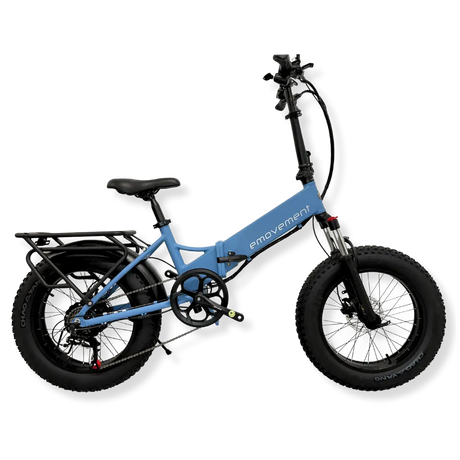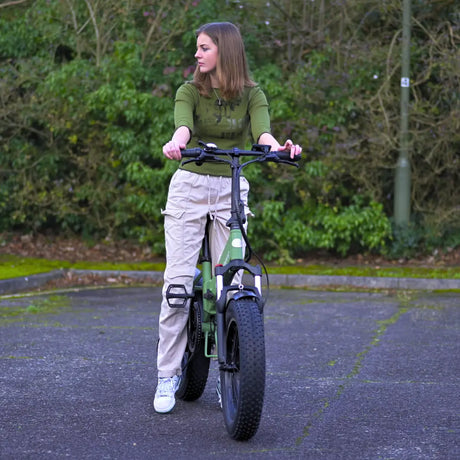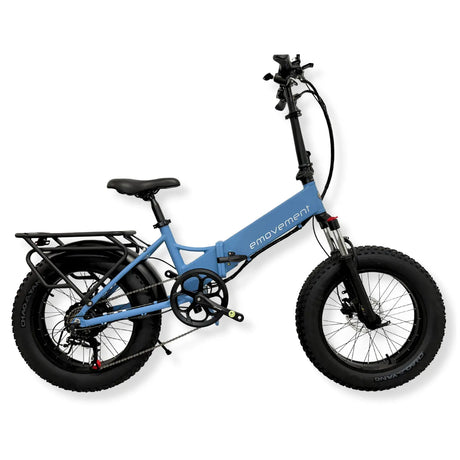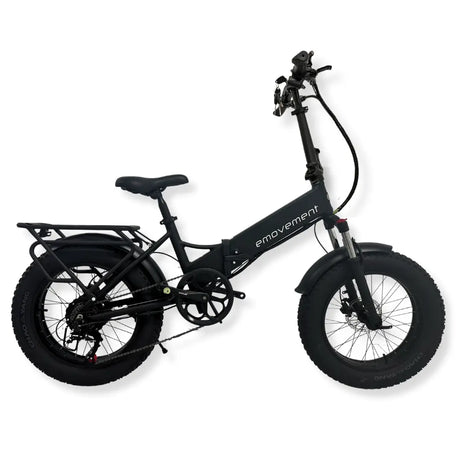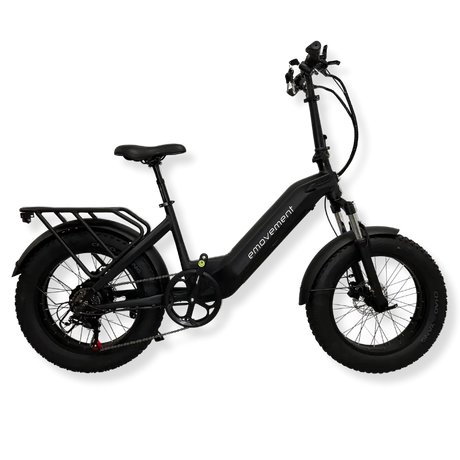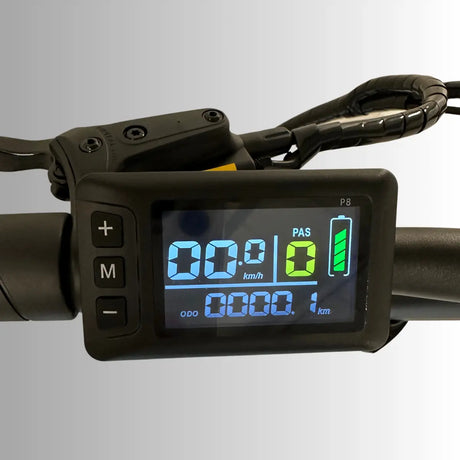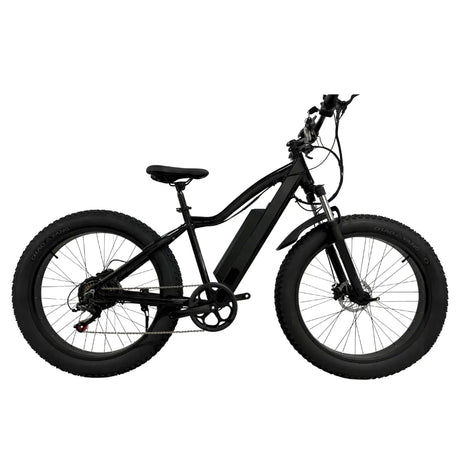As technology advances and the world becomes more environmentally conscious, the transportation sector has evolved to incorporate more sustainable modes of urban commuting and off-roading. Consider, for instance, electric bikes. They offer a unique blend of health benefits, eco-friendliness, and convenience. However, due to the change in the regular UK e-bike laws, their legal status confuses many.
If you live in the UK, you might ask ‘Are electric bikes legal?”. Keep reading as we discuss the e-bike laws of the United Kingdom so you become aware of the legal framework for cycle paths, roads, trails, throttle use, etc. Following the rules is essential as breaking them can result in fines, fatal accidents, or a driving disqualification.
Electric Bikes: Definitions and Classification
Electric bikes are bicycles integrated with an electric motor that assists you when you pedal. This motor is powered by a rechargeable battery mounted on the e-bike and will help you propel forward. Depending on your support level and how hard you pedal, an electric bike motor will deliver power to assist you during your journeys. Let’s take a look at their different types:
1. EAPCs – Road Legal
EAPC stands for ‘Electrically Assisted Pedal Cycle’. In the UK, you don’t require a licence to ride a pedal-assisted e-bike or get it insured, taxed, and registered, given its motor is below 250w and speed below 15.5km/h.
EAPCS need pedals for propelling and should display either their motor’s manufacturer or the power output. They should also show the e-bike’s maximum speed or the battery voltage.
2. Speed Pedelecs – Classified as Mopeds
These e-bikes incorporate higher-powered motors, achieving speeds up to 45km/h. Unlike pedelecs, speed pedelecs don’t cut the motor’s power once a specific speed is reached, such as 15.5 km/h. They are popular for leisure riding and commuting since they help riders navigate traffic, strong headwinds, and hilly areas. However, they are subject to different speed limits according to the type of road.
3. Electric Motorbikes
Electric motorbikes are plug-in electric vehicles with three or two wheels, substituting the internal combustion engine of a standard bike for large lithium-ion batteries and an electric motor to drive the rear wheel. In recent years, enhanced battery technologies have resulted in a range of electric motorcycles that go up to 96 km/h- ideal for inter-city commutes on national highways.
Pedal-Assist Vs. Throttle-Controlled Electric Bikes
A throttle-controlled and a pedal-assist e-bike differ in their mechanism of controlling the electric power on the bicycle. With throttle, the motor can be activated with a button or a twist, after which you won’t need to pedal. In contrast, the pedal-assist only activates the motor when you pedal to provide a more consistent and natural riding experience.
Whether you purchase a pedal-assist or throttle-controlled electric bike depends on your battery life, riding style, and personal preference. If you prefer more flexibility, you can opt for an e-bike with both options, like hybrid mountain bikes.
The Legal E-Bike Speed and Power Limits in the UK
According to EAPC regulations, a pedal-assist bike should propel you forward only when you pedal and stop assisting at 15.5 km/h. EAPCS can only generate a power output of 250w.
Rules for Faster E-bikes and Motorbikes
Some off-road electric bikes, like mountain bikes, don’t count under the EACP regulations and have a button that removes the speed limit. These bikes are also called speed pedelecs that require you to wear a motorcycle helmet and have a driving licence. You can get up to 45 km/h assistance with a 500w motor. However, you’ll require a number plate, tax, mirrors, a strong helmet, and insurance, as is the case with the electric motorbike, in e UK law. Although it’s a simple process to unrestrict an e-bike to higher speeds, you should proceed with caution for both safety and regulatory reasons.
Penalties for Exceeding Speed Limits
You can ride an EAPC without a licence. On the other hand, if you exceed the speed limit or ride an off-road electric bicycle that doesn’t follow the EAPC rules, you can be prosecuted for riding without a licence and insurance. Additionally, exceeding the speed limit for any e-bike can result in getting a fine or points on your license.
Electric Bikes and Road Traffic Law
Bicycles under the GB law allow you to ride on roads without registering the bike, wearing a helmet, or having insurance. While it’s not illegal to own an e-bike with an electrical assistance or power output exceeding 15.5 kph and 250w, respectively, you can’t ride it on the public highway as a regular bike without registering and insuring it like a moped.
This includes both off-road and road rights, such as byways and bridleways. You can only ride unregistered and uninsured electric bikes on private land with the landowner’s permission.
Electric Bikes and Cycle Paths
You can ride Road-legal e-bikes where you can ride standard bikes, such as cycle lanes. However, according to the law, you can not ride on pavements unless specifically allotted to pedestrian and mixed cycle use. You must also obey the Highway Code, which includes traffic lights and stop signs.
On the other hand, speed pedelecs and some mountain bikes are typically subject to the same traffic rules as mopeds. This means that if mopeds are not allowed on cycle paths, so are speed pedelecs. These e-bikes have no specific status, you must follow the moped rules. You can opt for e-movement bikes if you’re looking for a road-legal foldable electric mountain bike UK.
Electric Bikes and Safety Equipment
Let’s be honest; accidents can happen to anyone at any time, which makes it essential to take safety precautions when riding any vehicle. And, of course, electric bikes are no different. A basic cycling helmet is the most crucial safety equipment you should invest in. A head injury during an accident can lead to severe repercussions, and a helmet protects your head from impacts and scratches.
Next come cycling gloves. Suppose you suffer a fall on your e-bike and attempt to brake it with your hands. In that case, you can obtain bruises, severe cuts on your hands, and even potentially broken bones. With a good set of cycling gloves, you can reduce the chance of injury and protect your palms.
We also recommend investing in elbow and knee pads, especially if you enjoy adventurous riding. These will keep you safe while becoming an alternative to full-body protective equipment for off-road biking in warm weather.
It’s no good riding an electric bike at night if you don’t have a good pair of lights and reflectors. Visibility is crucial for both the rider and everyone else. Accidents can occur if nobody notices you riding on the roads. A range of electric bike safety gear is available in most local shops and online stores, so don’t hesitate to check them out and find the best fit for yourself. Safety equipment is your best friend because it ensures your e-bike experience is fun, safe, and exciting.
Electric Bikes and Traffic Regulations
While cycle lanes in cities and towns keep you out of traffic, you’re not legally obligated to use them. If you share a segregated cycle lane with pedestrians, stay on your side to give people enough space to walk. As for pavements, you don’t have the right to cycle on them, but it’s not a criminal offence if you do.
It’s also legal for two to ride their e-bikes side by side, but you can’t ride more than two abreast and must single out when going around bends or on narrow roads. Good electric bike etiquette includes riding single file if other vehicles are behind you and letting them pass before you regroup.
And yes, traffic lights and their rules apply to cyclists. This means that if you cycle through an amber light or jump a red light, you will break the law and receive a fine of 50 pounds.
Electric Bikes and Age Restrictions
You must be 14 or older to ride an EAPC on the UK’s public roads. For more powerful models with greater speeds and power (such as throttle assist), there is an age restriction of 16 because you need a licence. If an underage individual rides an e-bike, they will be subjected to a fine.
Electric Bikes and Public Transport
Electric bikes are available for purchase with various features, including foldable and non-foldable models. A folding e-bike is an e-bike that can be folded, with its frame, saddle, and wheels coming together into a less bulky object. Some of these ebikes, like E-movement’s Hunter Extreme, are some of the best electric bikes UK and don’t require you to adjust the handlebar and saddle height with every unfolding, helping you save time.
According to UK law, foldable e-bikes can be taken on all transport services. Still, bus drivers have the right to decide whether to let you on, depending on how full the vehicle is. In contrast, non-foldable bicycles can be taken at specific times. Check out the exact times, rules, and routes for using and storing e-bikes in London’s public transportation system here.
Electric Bikes and Environmental Impact
In this section, we’ll look at how electric bikes impact the environment:
1. No Carbon Emissions
Unlike transportation modes like motorcycles, trucks, and cars, e-bikes don’t run on diesel or gas, meaning they don’t release carbon emissions into the atmosphere. These carbon emissions are the leading cause of global warming. Since electric bikes function on electric and human energy, you use environmentally friendly energy to ride them and help save the environment from harm.
2. No Environmental Pollution
In addition to providing zero emissions, electric bikes don’t release smog and toxic gases that lead to respiratory and other health problems. They’re also perfect for urban areas because they don’t contribute to air pollution, emitting little to no sound. With an e-bike, you won’t have to worry about being a nuisance to others, especially those walking, schooling, or living by roadsides.
3. E-Bike Batteries are Long Lasting
Sure, electric bikes integrate batteries to supply them with an electric current. However, the problem lies in how and where these batteries are disposed of, because most landfills result in environmental waste. Fortunately, e-bike batteries last a long time and can be recycled, so they don’t need to find their way into landfills.
While cars use lead batteries, e-bikes have lithium-ion batteries with a much lower detrimental effect on the environment. One way of reducing your carbon footprint is by reducing waste, and what better way to do that than by riding an e-bike to most places?
Changes to Electric Bike Laws UK
According to the DVLA’s EAPC rules for riding an e-bike, you have to obey the following ebike UK laws:
- No electric assistance over 15.5 kph
- A maximum power output of 250w
- The pedal must be in motion for any electrical aid.
- You must be 14 years of age or above.
For e-bikes above the 250w or 15.5 kph limit, the following rules apply:
- You need to tax and register your electric bike
- A driving licence
- Wear a helmet
- You cannot ride them on cycle lanes
Since February, the UK authorities have seen a surge in 750w throttle-controlled e-bikes in public places, down some underpass stairs, and for commuting. As previous legality warnings haven’t been sufficient to stop people from indulging in these dangerous activities, the UK electric bike laws have been updated for stricter implementation.
2025 Update
Update May 2015.5: The UK government has confirmed that the current rules on EAPCS will remain in place following full consultation.
Key Points:
- Power Limits Unchanged: A potential move to double the upper power limit, from 250 to 500 watts, was rejected. Power-assisted cycles must still be equipped with motors having a maximum output of 250w and not exceeding 15.5 mph.
- Throttle Assistance Regulation Left Unchanged: The government resisted allowing ‘twist and go’ throttle assistance up to 15.5mph without type approval.
Summary
Electric bikes have gained popularity recently and are increasingly used for commuting and off-roading. These e-bikes are a great alternative to other vehicles because they are environmentally friendly and can help you easily navigate traffic, especially if you opt for commuter e-bicycles. E-bikes are available in various designs and types, each specifying a speed and power limit.
Under UK law, the range of electric bike laws that apply depends on the kind of e-bike the rider has. As the rules and regulations regarding electric bicycles get stricter, it’s essential to stay informed and comply with them to avoid receiving fines and other repercussions.
FAQs
1. Are Electric Bikes Road Legal in the UK?
Typically, electric bikes are road legal if they meet the DLVA’S EAPC rules , i-e., they have a speed less than 25kph, motor power less than 250W, and are pedal-assisted instead of throttle powered. However, there are certain restrictions on modifications, with only EAPCs being allowed on the road without registration. Keep in mind that bikes with a ‘twist and go’ throttle function manufactured after 2014 cannot go above 25 kph.
2. Can I Ride an Electric Bike Without a Licence?
According to UK’s laws, you can ride an e-bike without a licence unless it has a speed and motor power limit above 25 kph and 250W , respectively. An electric bike that propels forward without using pedals (like throttle e-bikes) falls under the motorcycles and mopeds category, requiring you to possess a driving licence. Additionally, you’ll have to get it taxed and registered in every part of the UK. A stronger motor that pushes the bicycle forward even above the 25 kph speed limit doesn’t count as an e-bike by law.
3. Can Electric Bikes Use Bike Lanes?
Electric bikes can be ridden on bike paths in the UK as long as they meet certain criteria. For example, an e-bike equipped with pedals and having a maximum speed of 25 kph is allowed on bike lanes . In contrast, you cannot ride speed pedelecs on cycle paths unless they have been approved by the DLVA, and usually moped and motorcycle rules apply to them in the same way.
4. Can Electric Bikes Go on Roads?
You can ride on roads where bicycles are permitted under GB law. According to UK law, e-bikes that have a maximum motor power of 250W with a 25kph speed limit can be ridden legally on roads . Every bike should have pedals that propel it forward. If you are 14 years old and under, you can’t ride an e-bike in the UK. However, you don’t need to pay vehicle tax, register your electric bike, or obtain a licence.
5. Is It Illegal to Remove Speed Limiter from E-Bike?
As per UK’s law, it’s illegal to ride an electric bike without a speed limiter . Suppose your e-bike is integrated with a removable electronic speed limiter that makes sure it doesn’t exceed 25 kph. If you modify or remove it, you will be breaking the law. Acting against the government law will result in having to face repercussions, such as accidents, fines, etc. Remember that the speed limit is there to ensure your safety, so remove it at your own risk.
6. Are Electric Bikes with Throttle Illegal?
Electric bikes with throttle cannot be used as standard bikes legally and are subject to separate regulations and laws. An e-bike with throttle can only make use of its electrical assistance to kickstart the bicycle and increase its speed to 6 kph. Any electric bike with a throttle that goes over 25 kph needs to be licensed, taxed, and registered because it is classified as a motorbike. They are also not allowed on bicycle lanes.
7. What Laws Apply to Non-Compliant Electric Bikes?
If you don’t comply with the UK e-bike law:
- Drink-drive laws are likely to apply
- You could end up with points on your driving licence
- Your e-bike being confiscated
- You would possibly be fined for having no tax, MOT, or insurance
- A fatal accident could end you up in jail for up to 14 years
- If you’ve already been disqualified from driving, riding a non-complying electric bike will result in you getting arrested.


